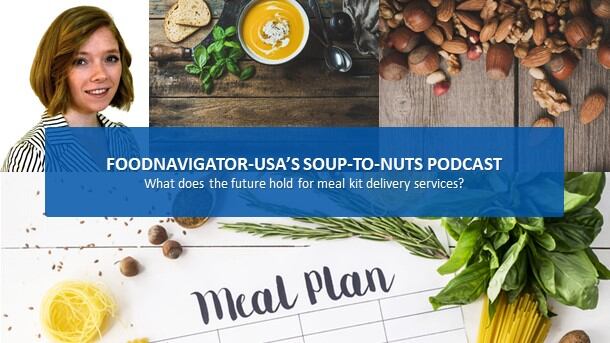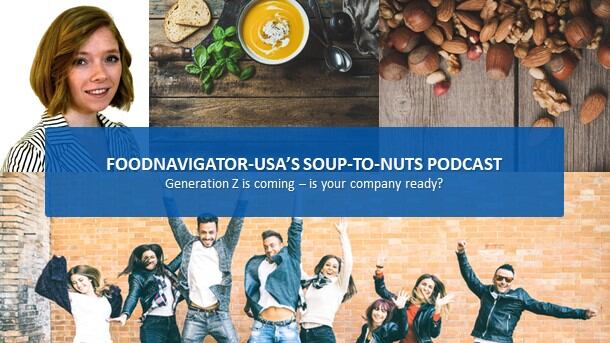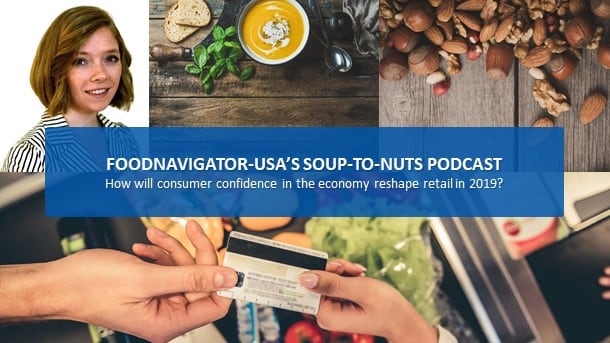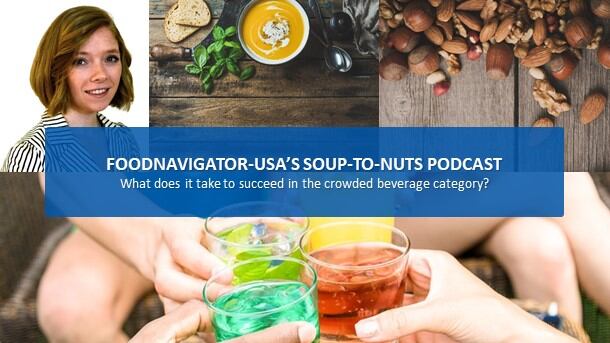According to the recently released third edition of Packaged Facts’ Meal Kits: US Trends & Opportunities, these setbacks, combined with an aggressive, ongoing promotion war between meal kit companies have led to the failure of numerous meal kit companies in recent years and calls into question the future of the segment.
Indeed, Packaged Facts predicts that while sales of meal kits will grow around 20% in 2018 and 2019, it will see a sharp drop off after that – dipping to a predicted 16.2% in 2020, followed by only 12.8% growth the following year and a mere 5.8% in 2023, resulting in a compound annual growth rate of only 12.2% in the coming five years.
But according to Cara Brosius, an industry analyst with the Freedonia Group and author of the Packaged Facts’ report on meal kits, there is hope for the segment. In this episode of FoodNavigator-USA’s Soup-to-Nuts Podcast, she walks us through what is slowing down the meal kit category and what strategies might help existing players not only survive but also thrive in the coming years.
The current landscape
Brosius explains in many ways, meal kits have been a whirlwind romance for Americans with the first companies launching less than 10 years ago. And like many fast-moving relationships, this one was full of potential at the start, but then as time passed hit a several hurdles.
“The timeline for meal kit delivery services has also been relatively short. It is dated back to the beginning of the decade. For instance, Hello Fresh was founded in 2011, Plated and Blue Apron were founded in 2012 and Home Chef started its operations in 2013,” Brosius said.
At that time venture capitalists and investors saw meal kits as the next big thing, but the disastrous Blue Apron IPO shined a light on the struggles in the category, making capital harder to come by, she said.
“The truth is that meal kits can’t really achieve economies of scale if they are operating as independent businesses. Delivering fresh ingredients is really difficult without an established distribution network,” she said.
What went wrong?
As Brosius has already hinted at, there are many factors weighing down the meal kit segment. But the most pivotal is price.
“A lot of people who have subscribed to meal kits, the ones who have cancelled their subscriptions tend to say they cancelled because the prices is too high,” she said, noting the least expensive options hover around $10, which consumers see as too high considering they still have to cook the meals themselves.
Another major hurdle for the meal kit category is the abundance of packaging it must use to safely deliver food to consumers’ doorsteps, she noted. However, she recognized that meal kit providers are trying to cut back and use recyclable and compostable materials when possible.
Attaining and retaining consumers is another pain point for the meal kit industry, which has relied heavily on promotions, such as gift cards for $25 of the first order, to attract buyers without also offering consumers an incentive for loyalty.
In an effort to boost retention, some meal kit providers require consumers to sign up for a subscription – a strategy that sounds good in theory, but which has backfired. Cara explains that consumers simply don’t want to be locked into a subscription that requires multiple meal purchases per week over a long period of time.
Finally, Brosius suggests that meal kits may be selling their products short by focusing mainly on advertising and marketing efforts targeted at young consumers. She sees significant potential for marketing to older consumers and those with families.
Strategies for survival
Despite these many sticking points, Brosius believes there is a future for meal kits, but she warns it likely won’t be in the delivery space. Rather, she says, the best strategy for long-term survival for meal kits is to establish a partnership with brick and mortar retailers, which is already working for some players.
“The trajectory for the meal kit space, I think, that first of all many things are going to happen in the next few years. I think meal kits as a product are going to see continued growth but that meal kits as a delivery service are going to stall,” she said.
A better bet, she said, is to work with retailers so that consumers can buy meal kits when they want them when they are already buying other groceries.
If meal kit providers want to continue with the current model, then Brosius says they must find ways to lower the price per meal in order to attain and retain consumers.
Other strategies that Brosius says meal kits are pursuing to stay afloat include offering more flexibility around subscriptions and offering complementary services, such as Blue Apron’s wine club and online store that sells aprons and kitchen equipment.
While the meal kit category continues to pursue options for survival, Brosius notes only time will really tell which of these strategies work and which players will come out on top.




